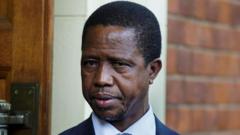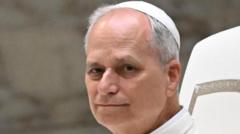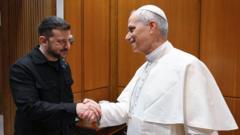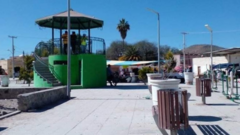Amidst the backdrop of geopolitical tensions, the funeral of Pope Francis on April 26, 2025, witnessed an eclectic mix of mourners, including world leaders and ordinary citizens paying their respects. The pontiff's commitment to humility and inclusivity was reflected in the simplified ceremony, as he is laid to rest in a manner befitting his legacy.
Mourners Bid Farewell: A Diverse Gathering at Pope Francis' Funeral

Mourners Bid Farewell: A Diverse Gathering at Pope Francis' Funeral
Thousands from across the globe gather to honor the legacy of Pope Francis, who championed inclusivity during his papacy.
As mourners descended upon St. Peter’s Square, the atmosphere was characterized by an array of emotions from solemnity to reverence. The open-air Mass featured notable attendance from heads of state, including President Trump and President Biden, alongside representatives from various nations, revealing the complexities of international relations set against the backdrop of Francis' teachings.
During the ceremony, Pope Francis’ body was transported to St. Mary Major, a church that resonated deeply with him. His burial was accompanied by a distinctly modest coffin, symbolizing the simplicity he advocated throughout his papacy, contrasting with traditional papal grandeur.
In a time of social and political upheaval, the funeral served as an informal stage highlighting the ongoing divides in global politics. The seating arrangements illustrated the careful navigation required for such an event, with delegates from conflicting nations placed side by side. Noteworthy attendees included Ukraine's President Zelensky and Russian representatives, encapsulating the tense geopolitical climate.
The event was steeped in tradition, marked by the somber yet poignant performance of Gregorian chants, signaling continuity within the church’s musical heritage. The Sistine Chapel Choir led the significant moment, emphasizing a return to simplicity in the face of elaborate ceremonial expectations.
As the world came together to mourn, the funeral transcended the public spectacle, encouraging reflection on Pope Francis' extensive impact on the Catholic Church and the broader global community. His legacy of compassion and reform remains a focal point for dialogue among Catholics and non-Catholics alike.
Amidst the outpouring of sorrow and celebration of life, Pope Francis’ funeral stands as a reminder of the unifying power of empathy and inclusive dialogue in a world often marked by division.
During the ceremony, Pope Francis’ body was transported to St. Mary Major, a church that resonated deeply with him. His burial was accompanied by a distinctly modest coffin, symbolizing the simplicity he advocated throughout his papacy, contrasting with traditional papal grandeur.
In a time of social and political upheaval, the funeral served as an informal stage highlighting the ongoing divides in global politics. The seating arrangements illustrated the careful navigation required for such an event, with delegates from conflicting nations placed side by side. Noteworthy attendees included Ukraine's President Zelensky and Russian representatives, encapsulating the tense geopolitical climate.
The event was steeped in tradition, marked by the somber yet poignant performance of Gregorian chants, signaling continuity within the church’s musical heritage. The Sistine Chapel Choir led the significant moment, emphasizing a return to simplicity in the face of elaborate ceremonial expectations.
As the world came together to mourn, the funeral transcended the public spectacle, encouraging reflection on Pope Francis' extensive impact on the Catholic Church and the broader global community. His legacy of compassion and reform remains a focal point for dialogue among Catholics and non-Catholics alike.
Amidst the outpouring of sorrow and celebration of life, Pope Francis’ funeral stands as a reminder of the unifying power of empathy and inclusive dialogue in a world often marked by division.




















